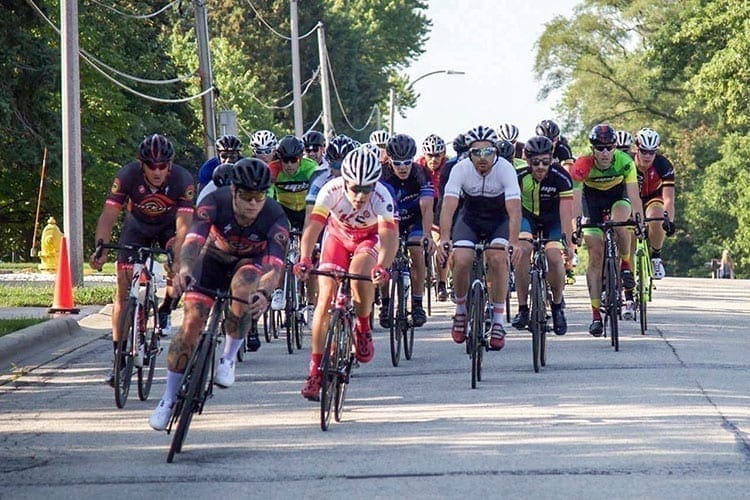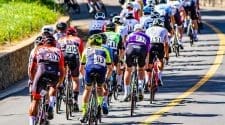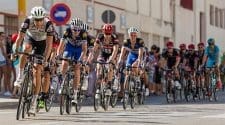Months of preparation, hectolitres of sweat poured out of training. All this to make a good start to the new season and improve the results from the previous one. You count the weeks and days. Finally, the day of the first competition is finally coming up. You wake up, look in the fridge and think – what would you like to eat here? You see natural yogurt, you think, “Hmmm, I haven’t eaten dairy products since I was a child. In fact, I don’t even like them very much, but on the cyklopedia there were some suggestions for breakfasts recently. You remember the examples of breakfasts you read on the fan page. The choice falls on porridge on yogurt with forest fruits. Okay, just healthy products. You think, “A light meal, perfect for a starter day, will provide some protein, complex and simple carbohydrates. There’s no way I won’t beat the result of the previous competitions. That’s how you delivered about 10g of lactose and your digestive system went crazy.
It does not take so much to waste the day of the competition and expose yourself to gastrointestinal discomfort, which will prevent us from taking part in the competition or will make every kilometer driven will be a pain instead of pleasure.
Nutrition planning before the competition
Feeding for competitions, we can start already over a week before the start. It all depends on how we start the carbohydrate loading process. This term means a nutritional strategy based on maximizing the glycogen level in the body, which gives us more energy on the day of the competition, distracts the feeling of fatigue and improves performance. In endurance sports 3 methods lead the way:
1):
- exhaustion phase – 3-4 days – we increase the intensity of exercise in order to deplete glycogen stores
- Transition day – we use exercises and drastically reduce carbohydrate consumption to approx. 10%.
- stress phase – 3-4 days – we reduce the intensity of exercise and increase carbohydrate intake
2):
- 6 days before the start of the competition – we gradually increase carbohydrate consumption and decrease the intensity of training.
3):
- 36-48h since the last high-intensity workout, we use carbohydrates at the level of 10g / kg body weight/day. We rest 24 hours for competitions.
During each of these protocols, attention should be paid to facts such as :
- an adequate supply of liquids – 1g of glycogen binds 3-4g of water
- The selection of an appropriate method according to the nutritional preferences of the contestant
- increase the bodyweight of the competitor by 1-2kg – it is not adipose tissue
- The need to use products with a high glycemic index, including sweets (jelly beans), sticks, jam, honey and fruit juices
- limiting the consumption of fruit and vegetables (fiber) because of the risk of gastrointestinal problems
Example of a day of eating during carbohydrate loading:
- Breakfast: cornflakes (3 glasses), milk 2% (1 glass), orange juice (1 glass).
- Second breakfast: white rice (1 sack), natural yogurt (1/2 large cup), strawberry jam (7 spoons), maple syrup (6 tablespoons).
- Lunch: white pasta (1 and 1/2 glass), chicken breast meat (1/2 piece), tomato sauce (1/2 glass)
- Snacks: crackers (20 pieces), jellies (pack), isotonic drink (1 bottle)
Nutrition planning on the starting day
The nutrition plan for the day of the competition should provide adequate amounts of energy, macroelements, vitamins, and minerals and ensure proper hydration of the athlete. The plan should be adjusted to individual preferences, supplementation, and ensure proper distribution and quality of macroelements during the day. Competition should not be tested, new products should not be introduced to avoid the risk of digestive problems. Nutrition should be based on products usually used where the reaction of the athlete is well known.
Nutrition on the day of the competition can be divided into 3 phases:
- meal/meals before the start
- Nutrition during the competition
- meal/meals after the end of the competition
In the first phase, attention should be paid to easy assimilation and quick digestion. Limit the consumption of fiber so as not to expose yourself to the risk of gastrointestinal discomfort and reduce the content of fats in meals so that the food quickly digests and does not remain in the digestive system. Meals should not be large in volume in order not to create a feeling of heaviness.
Particular attention should be paid to easily digestible carbohydrates and protein.
Example :
- Wheat bread with country cheese, honey/jam with fruit juice
- Corn flakes/oat flakes/muesli on milk with whey protein
In nutrition during the duration / shortly before the start, you should pay attention to the planned supplementation (I will not develop this topic, in the future there will be an article) and easily accessible forms of carbohydrates such as mainly energy gels, energy bars, isotonic drinks.
Nutrition during the effort depends on the intensity and duration of the competition. The aim is to provide energy, delay the feeling of fatigue and postpone the exhaustion of glycogen reserves.
| Effort duration | Amount of carbohydrates / h |
| <45 minutes | There’s no need to consume |
| 45-75 minutes | Oral cavity rinsing with liquids with carbohydrates e.g. isotonic drink |
| 1-2.5 hours | 30-60g hours |
| >2,5h | 90g h (glucose 60g + fructose 30g) |
The athlete should consume 300-600ml of liquids / h during the competition. Increased fluid supply can cause gastrointestinal problems. In women, when the intensity of exercise and sweating rate decreases, excessive hydration and consequently hyponatremia may occur.
The aim of post-competition nutrition is to rebuild glycogen stores, replenish body water, use metabolic adaptations and reduce inflammation resulting from exercise.
Whether we eat a meal/snack directly after the competition will not affect the glycogen recovery rate if we have a break of 8-24 hours for the next exercise. However, if this time is shorter and the training will be demanding, it is worth taking care of the fastest possible supply of carbohydrates.
Meals should be rich in protein (20-40g protein per meal). After the competition, the supply of carbohydrates can be based on whole-grain products, fruits and vegetables, while providing vitamins, minerals and antioxidants. Supply the fat from plant sources such as olive oil, nuts, and seeds.
Example :
Lentil and courgette stew
Beefsteak with rice and vegetables
Article by Damian Chlanda, Cyklopedia
No products found.

















